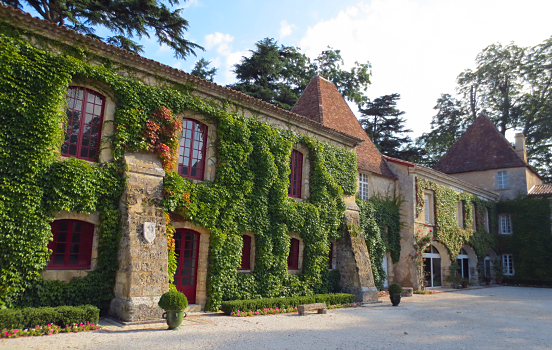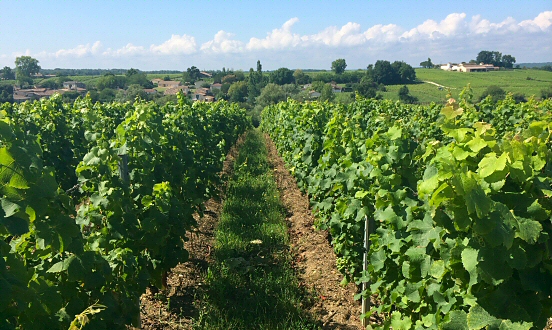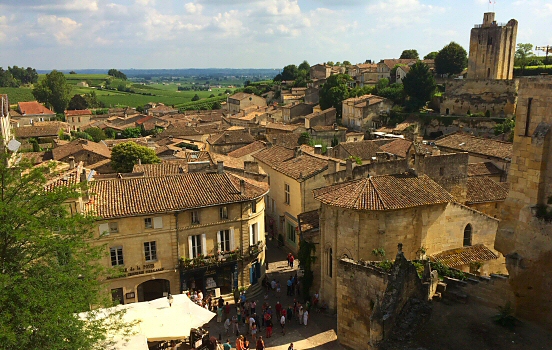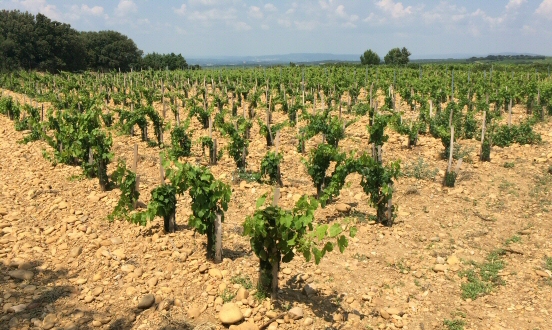French wines are deeply ingrained in the national culture and are produced in a wide variety of styles. But there can be a vast difference in taste, aroma and other characteristics, depending on the region.
Not surprisingly, there are about as many different opinions on this as there are different wines. Grapes can be a touchy subject. In the movie Sideways from 2004, the main character Miles says “If anyone orders Merlot, I’m leaving. I am not drinking any fucking Merlot.” This actually caused Merlot sales to crash in the US, until recently. One would hope that people would trust their own palate more than a fictional character.
 Château Carbonnieux, south of Bordeaux.
Château Carbonnieux, south of Bordeaux.
We start the journey in Bordeaux, to get it out of the way. This is perhaps the most famous wine region in the world. The area has a perfect climate for producing wine and the reds are famously well-balanced. We visited famous producers in Medoc and Graves, such as Château Lagrange which is said to be the largest vineyard in Medoc, and Château Siran, once owned by the grandparents of Henri de Toulouse-Lautrec.
Drifting east through sweeping hills to Sauternes. This tiny village is renowned for their sweet wine bearing the same name. The grapes here don’t just ripen. They rot, but in the best possible way. This noble rot, as they call it, concentrates sugars that turns juice into something holy, sweet and strong. A taste of sunlight, honey and crisp mornings.
 Vineyard of Château d’Arche in Sauternes.
Vineyard of Château d’Arche in Sauternes.
Then there’s Saint-Émilion, not far from Sauternes. It’s another famous wine region in Gironde, but what gets my attention is the limestone caves. Behind unmarked doors, silent stone chambers carved by centuries. Stumbled into the largest underground monolithic church in Europe. Cold air, echoes of steps, walls that remember every whispered confession. The caves stretches across the village and many are still waiting to be discovered, so no new roads are allowed in the area due to risk of collapsing.
Above it all, the charming village unfolds like a slow confession itself, with vines climbing stairs, markets bustling, tourists and locals mixing.
 Overlooking the old market square in Saint-Émilion.
Overlooking the old market square in Saint-Émilion.
The Rhône Valley is another story entirely. Having gone further east, the terrain flips. Riverbeds, rocky plateaus and clay make for a different wine. It’s unpredictable, jagged and wild. The soil, climate and topography varies a lot in the region, as do the grapes. The wine area, which is the second largest in France, is divided in the northern and southern parts, both with their distinctive features.
We begin the day with a swim in the Mediterranean, salty light on our skin, then traced the Rhône’s western edge through Provence.
Châteauneuf-du-Pape is perhaps the most well-known wine region here with their full-bodied reds, a tradition started by the popes of nearby Avignon. Compared to Bordeaux they are not so strict around here, which makes for some interesting combinations.
 Vineyards in Châteauneuf-du-Pape.
Vineyards in Châteauneuf-du-Pape.
There’s something elusive in these vineyards beyond vintage and terroir. It’s about what’s rooted, what survives, what tastes like the place. Sun, soil and sweat combined down through the centuries. The constant hum of proud people trying to make something good out of dirt and sun. Wine is living history.
Beyond wine, the region is full of interesting artifacts from the Roman times. The town of Orange features the most impressive Roman theater still standing in Europe. South of Saint-Remy-de-Provence we visited the archeological site of Glanum, where well-preserved Roman ruins spend eternity in the sun. Les Baux-de-Provence is a tiny village in the mountains with a very impressive castle ruin. Avignon itself has the humongous Palais des Papes as poster boy. The building is the world’s largest Gothic palace and the walls are thicker than most. So even if wine is not your thing, there is still an abundance of reasons to visit southern France.

Comments
No comments yet.
Leave a reply